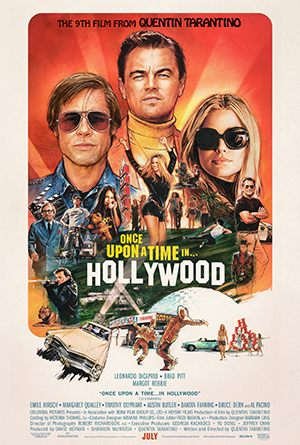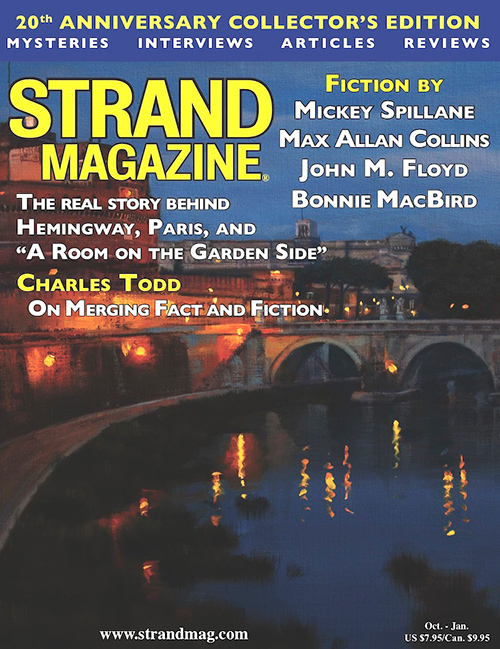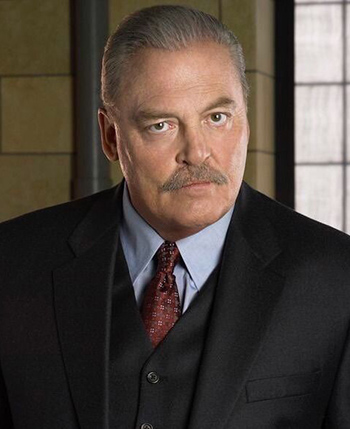If you’d like to pick up any of the Nathan Heller novels that Thomas & Mercer has reprinted (that’s everything but the more recent Forge-published novels including the upcoming Do No Harm), you can do so this month for a mere 99 cents per. Right here. Step right up!
If you’ve read and liked Girl Most Likely, please post an Amazon review, however brief. We’ve drifted just below a solid four stars and could use input from readers who dug it to push us back up. If you haven’t read it yet, what are you waiting for?
I have been having difficulty with responding to your comments here. Readers seem to be able to post, but recent responses I’ve made to questions have not made it through the process. I responded three times to this thoughtful post from Mike Pasqua:
I’ll respond to Mike right now, and hope what I have to say will be generally interesting to readers of these updates.
Seduction of the Innocent’s surviving four members have discussed the notion of performing again, one last time, obviously without Miguel but in his honor. Bill Mumy was part of that discussion. Now, he might change his mind, but the reality is we were not asked to appear for the 50th San Diego Con, which would have been an ideal place to do a final show, possibly post-Eisner Awards. Our thinking was that we’d probably do a single, if rather long, set. We appeared at DragonCon without Miguel, when his movie work precluded his attendance, so there is (as Mike indicates) a precedence for SOTI playing as a four-piece.
Saturday morning quarterbacking is the easiest thing in the world to do, and I have nothing but respect and appreciation for those who put this juggernaut of a con on. Mike is an old friend and he is a veteran of helping mount this difficult, challenging show. My criticisms of the con are mostly confined to the increasingly dangerous exhibition hall floor, where the problems of crowds were exacerbated by exhibitors who created a frenzy with artificially contrived limited editions that fed lines in main aisles, which in turn sparked belligerent behavior on the exhibitor’s staffs and on convention security. SDCC stands on the precipice of a major, even tragic disaster if these practices are not curtailed.
My other complaints are more personal – that my collecting interests are not as well-served by the show now, and that my age (and the aftermath of health problems) make it difficult for me to navigate a room with 150,000 people in it, all seeking their own pop culture nirvana.
Here’s another comment I wasn’t able to respond to (Nate is working on it), this from Brendan:
And a Johnny Dynamite collection is coming out, too?! I can’t wait! Are you and Terry connected to that reprint? I’ve heard you two share the copyright on the character, but was never sure if that was true.
Yes, a Johnny Dynamite collection is coming out from Craig Yoe, gathering all of the Pete Morisi-drawn stories with a bonus Ms. Tree story (one of the few things not collected in the forthcoming five-volume Titan series). I am doing an intro but haven’t written it yet. We do control the copyright.

Once Upon a Time in Hollywood is probably director/writer Quentin Tarantino’s best film – certainly it’s my favorite movie of his.
I came slow to Tarantino. I did not care for – and am still not a fan of – Reservoir Dogs, Pulp Fiction, True Romance and both Kill Bills. With the exception of the Elmore Leonard-based Jackie Brown, his films seemed to me undisciplined show-offy affairs, and painfully reflective of the motormouth, know-it-all video clerk from the ashes of which director Tarantino emerged.
But starting with Inglorious Basterds, Tarantino began to better organize his narratives, making them less self-indulgent without losing his fannish enthusiasm and love of the outrageous. His characters no longer all sounded the same, spewing glib Tarantino speak; rather, they had specificity and even depth. Django and The Hateful Eight were among my favorite films of their respective years, and I am now – however improbably – a fan.
Like Yesterday, Once Upon a Time in Hollywood will work best on a certain kind of Baby Boomer audience member (some will be put off by its bold storytelling and climactic violence). Tarantino lovingly, almost fetishistically, recreates the late ‘60s in Los Angeles, both the era and its artifacts. For those of us who lived through those years, it’s a time machine ride that will plaster a smile on faces despite the lingering presence of the Manson family on this oddly innocent world’s periphery.
I won’t talk much about the plot – frankly, there isn’t much of one, although for something so slight, the payoff is major. And this is a film that needs to be seen cold – avoid spoilers at all costs.
But the incidental joys are endless – replications of ‘50s and ‘60s westerns (and their differences); clips from films and TV shows into which the stars of this film are believably inserted (and, in one case, movingly not inserted); marquees and movie posters of exactly the right releases; products and places and things that now exist only in memory, brought back to life.
The film is not without controversy. Tarantino has not made friends with the far left by hiring some actors who have been tarnished by #Metoo, and his protagonists are obviously white males, one of whom (Brad Pitt) is overtly if quietly macho. An interesting and thought-provoking aspect of the narrative is the possibility that the Pitt character killed his wife – something neither confirmed nor denied – which has generated career-crippling rumors for the stunt man character. Somewhere in there is a commentary about the post-Weinstein criticism Tarantino has been getting, and knew he would inflame, but we are left to sort it out for ourselves.
On the other hand, Sharon Tate as portrayed by Margot Robbie, is a sweet, sympathetic portrait that shows the director as anything but misogynistic. This is in keeping with Tarantino’s improved ability to create characters for his little playlet-like scenes that aren’t just fragments of himself. Particularly winning is a surprisingly touching yet unsentimental scene between DeCaprio’s fading TV star and a female child star.
DeCaprio and Pitt give unflinching performances as “heroes” who are hugely flawed. What you ultimately have in Once Upon a Time is a loving critique of Hollywood and that specific late ‘60s era, at once a valentine and a reality check. Oh, and if you are avoiding this because of the Manson aspect, don’t. Their presence is unsettling but not a deal-breaker.
For me, the film had some interesting resonances. I was working on the script for
For example, Bruce Lee is depicted in the Tarantino film, and his son Brandon was my friend – and a huge Quarry fan. I once got a telephone call from him (while Barb and I were living in our downtown Muscatine apartment over a beauty shop, our rent $100 a month) to tell me how much he loved the Quarry novels. By the way, Damon Herriman plays Charles Mansion in Once Upon a Time – he played the Boyd character (renamed “Buddy”) in the Quarry TV series. I spent time with him on set – he’s a delightful guy…Australian, by the way.
Also, right now I’m reading Funny Man, a warts-and-all bio of Mel Brooks, and discover Jose Ferrer was a pal who Brooks often ran his stuff by, because he found Ferrer a good judge of what’s funny. Of course, Jose was Miguel’s father. I once spoke to Jose Ferrer on the phone about his love for mystery fiction, and he was so impressed that I was close to Mickey Spillane.
Yet here I am in Muscatine.
Right now I’m glad to be, because Nate and Abby and Sam and Lucy (son/daughter-in-law/grandson/granddaughter) have moved here and are just up the street from us now. Guess who went to a 3 pm matinee of Once Upon a Time in Hollywood with me?
Nathan Collins.
Ron Fortier has done a wonderful review of Murder, My Love. Check it out!
A detailed entry on my band, The Daybreakers, is on Wikipedia. I had nothing to do with it, which makes it special to me. Pretty good. Check it out, too.
Finally, here’s a short but sweet review of The Wrong Quarry, my favorite of the list books (Brandon would have loved it), on Sons of Spade.
M.A.C.


